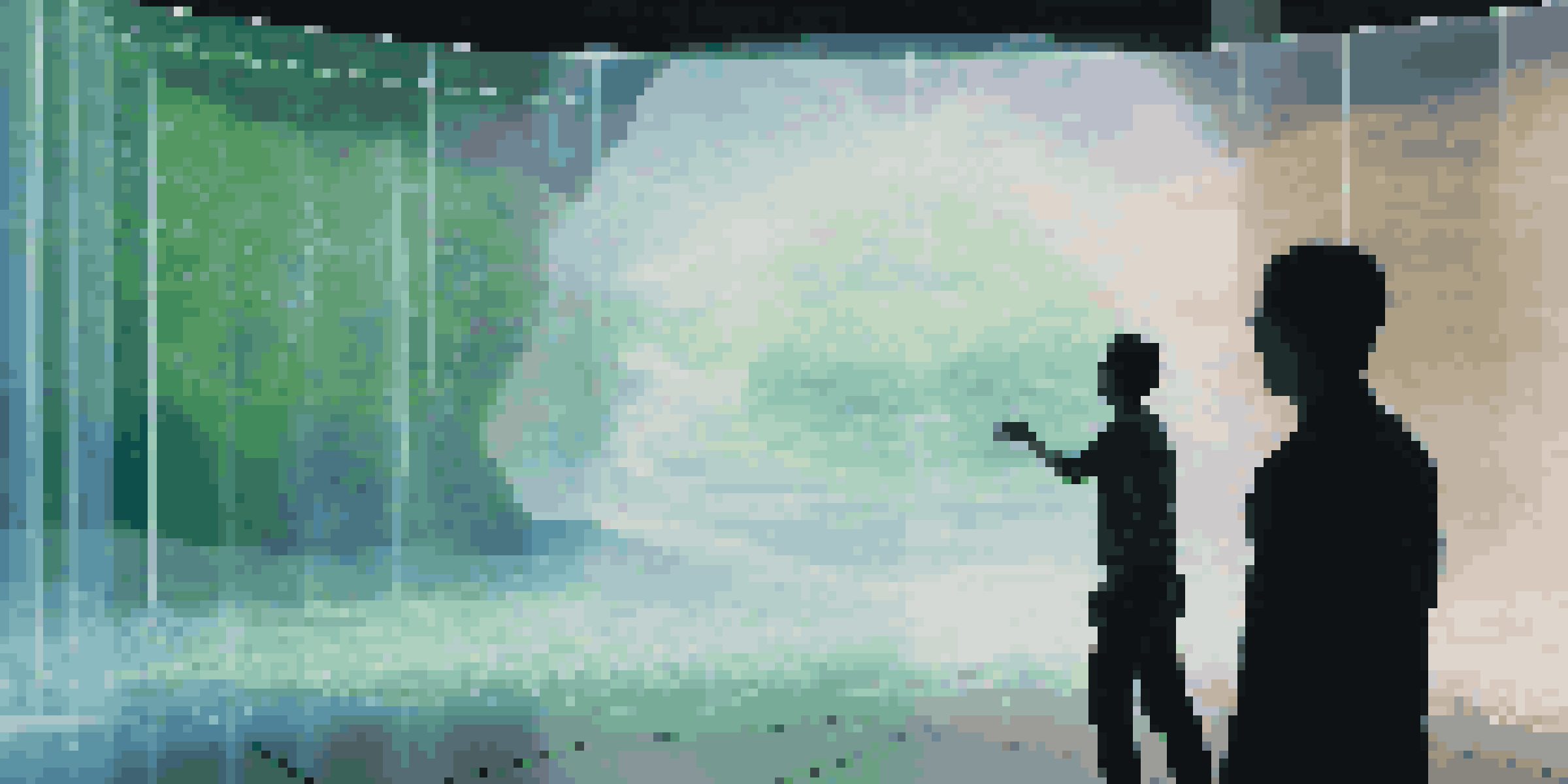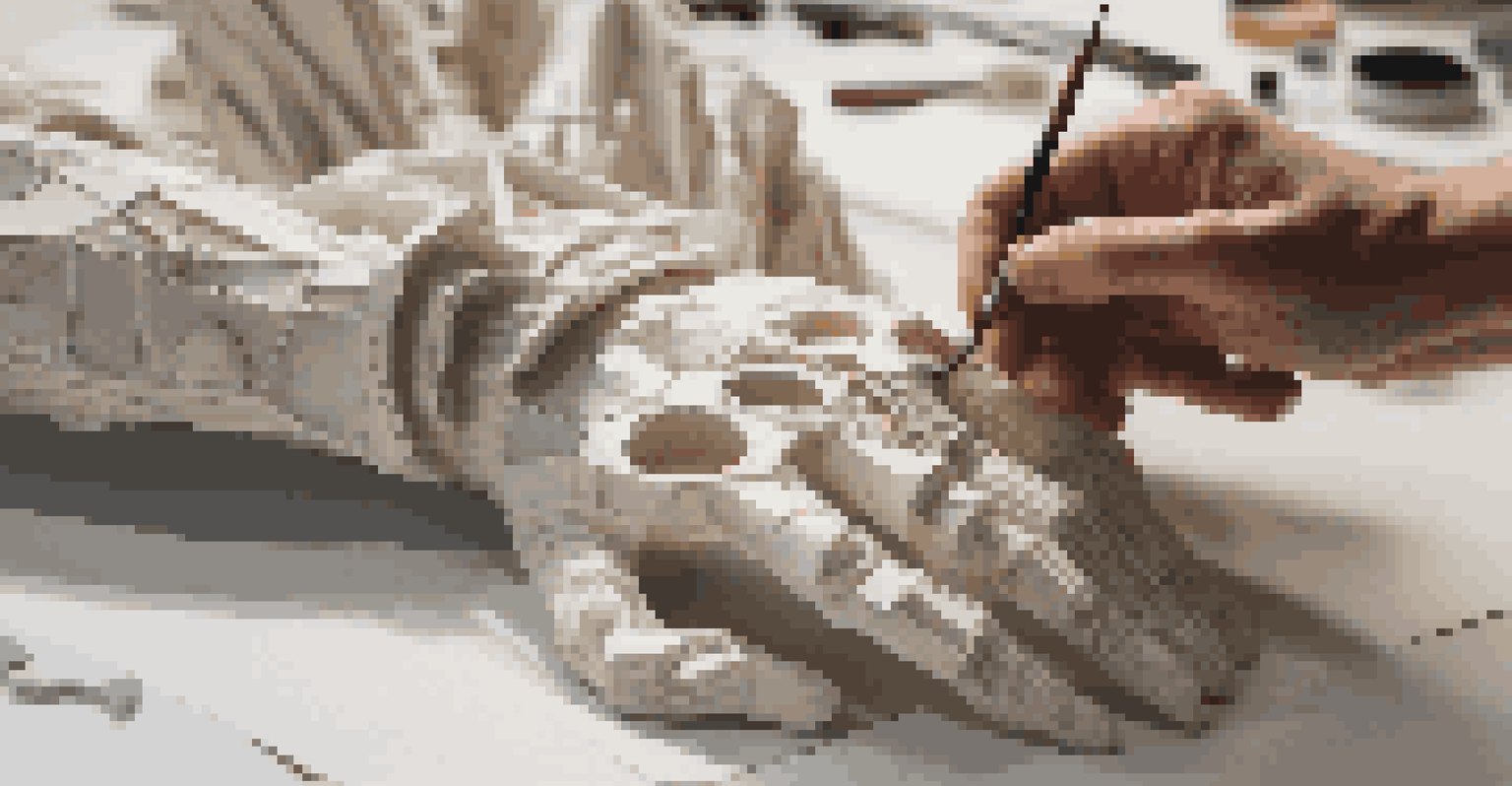Art and Surveillance: Political Commentary Through Creative Expression

Understanding Surveillance: A Modern Challenge
Surveillance has become an integral part of our daily lives, often hidden behind the guise of security. From social media tracking to government monitoring, the ways in which we are observed can feel overwhelming. This pervasive eye prompts questions about privacy, freedom, and the implications of being constantly watched.
Art is a lie that makes us realize the truth.
Artists have seized this opportunity to critique these practices, transforming the abstract concept of surveillance into tangible works. Through various mediums, they explore the emotional and psychological effects of being under constant observation. This creative expression serves not only as a commentary but also as a call to awareness about our rights and freedoms.
By framing surveillance through an artistic lens, these creators invite us to question the status quo. They challenge audiences to reflect on their own experiences with privacy and control. In doing so, art becomes a powerful tool for social critique, bridging the gap between complex political issues and public understanding.
Historical Context: Art as Resistance
Throughout history, artists have often taken on the role of social commentators, using their work to resist oppressive regimes. From the propaganda of World War II to the politically charged art of the 1960s, creative expression has served as a means of protest and awareness. This legacy continues today as artists address the pervasive nature of surveillance.

Consider the works of artists like Ai Weiwei, who uses his platform to expose government corruption and human rights violations. His installations often reflect the tension between individual freedom and state control, compelling viewers to confront uncomfortable truths. By weaving personal narratives with broader political themes, he invites a deeper engagement with the subject matter.
Art as Resistance to Surveillance
Artists utilize their work to challenge and critique the pervasive nature of surveillance, encouraging public awareness and reflection.
This historical context reveals that art has always had the potential to challenge authority. Whether through visual art, performance, or literature, creators have used their voices to highlight injustices. In the face of surveillance, this tradition of resistance remains vital, encouraging new generations to speak out.
Modern Examples: Artists Tackling Surveillance
In contemporary art, various creators are explicitly addressing the implications of surveillance in their work. For instance, the installation 'The Invisible Man' by artist Aakash Nihalani uses playful visual illusions to explore how individuals navigate a world dominated by watchful eyes. His work highlights the tension between personal freedom and societal expectations.
The medium is the message.
Another notable example is Heather Dewey-Hagborg, who challenges the ethics of genetic surveillance. Her project 'Stranger Visions' involves creating 3D-printed sculptures based on DNA samples collected from public spaces. This provocative approach raises questions about identity, privacy, and the consequences of surveillance technologies.
These modern examples illustrate how artists not only critique surveillance but also engage audiences in a dialogue. By using innovative techniques and thought-provoking concepts, they encourage viewers to rethink their relationship with technology and authority. Art becomes a catalyst for discussion, urging us to consider the implications of our digitally mediated lives.
Interactive Art: Engaging the Audience
Interactive art offers a unique way for audiences to engage with the themes of surveillance and control. Artists like Rafael Lozano-Hemmer create immersive installations that invite viewers to participate, often blurring the lines between observer and observed. This engagement allows for a deeper exploration of the issues at hand.
For example, Lozano-Hemmer's '33 Questions per Minute' uses technology to create a real-time conversation about surveillance. As participants engage, they become aware of their own roles in the surveillance ecosystem, reflecting on how their actions contribute to or resist these systems. This interactive approach fosters a sense of community and shared experience.
Interactive Art Engages Audiences
Through interactive installations, artists invite audiences to actively engage with themes of surveillance, transforming passive observation into meaningful participation.
Through participation, audiences are not merely passive viewers; they become active participants in the conversation. This dynamic fosters a greater understanding of the implications of surveillance while empowering individuals to take action. Interactive art exemplifies how creativity can transform passive observation into active engagement.
The Role of Technology in Art and Surveillance
Technology plays a dual role in the intersection of art and surveillance. On one hand, it enables artists to create innovative works that challenge surveillance practices. On the other hand, the same technologies often facilitate the very surveillance they seek to critique, creating an ironic tension in contemporary discourse.
For instance, artists use data visualization to represent surveillance statistics, making the invisible visible. By transforming complex data into accessible formats, they highlight the scale of monitoring and its impact on society. This approach demystifies surveillance, empowering audiences with knowledge and understanding.
However, this reliance on technology also raises concerns about privacy and anonymity. As artists navigate these complexities, they must balance their creative expression with ethical considerations. This ongoing dialogue illustrates the intricate relationship between art, technology, and the realities of surveillance.
Art as a Catalyst for Political Change
Art has long been recognized as a powerful catalyst for political change, inspiring movements and challenging oppressive systems. In the context of surveillance, artists have the ability to ignite conversations that encourage activism and advocacy. Their work can mobilize communities to demand accountability and transparency from those in power.
For example, street art often serves as a form of resistance, with artists using public spaces to communicate messages of dissent. Murals and installations can provoke thought and spur action, urging individuals to confront the implications of surveillance in their daily lives. This form of public art democratizes the conversation, making it accessible to all.
Technology's Dual Role in Art
While technology enables innovative artistic expression, it also raises ethical concerns about privacy and surveillance practices.
By engaging with the public, artists foster a sense of collective responsibility. Their works remind us that we all have a role to play in shaping society and protecting our freedoms. Art becomes not just an expression of individual thought, but a collective voice advocating for change and accountability.
Conclusion: The Future of Art and Surveillance
As the landscape of surveillance continues to evolve, the role of art in critiquing and influencing societal perceptions becomes increasingly important. Artists will undoubtedly find new ways to address these challenges, pushing the boundaries of creative expression. Their ability to adapt and respond to emerging technologies ensures that art remains a vital part of the conversation.
The intersection of art and surveillance also invites future generations of creators to explore these themes in innovative ways. By embracing technology and fostering collaboration, artists can amplify their messages and reach broader audiences. This evolution will help ensure that the conversation surrounding surveillance remains relevant and impactful.

Ultimately, art serves as a reminder of our shared humanity and the importance of preserving our freedoms. As we navigate the complexities of surveillance, creative expression will continue to play a crucial role in advocating for a future where individual rights are respected and celebrated.